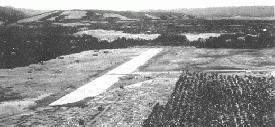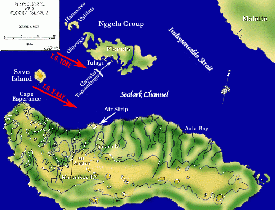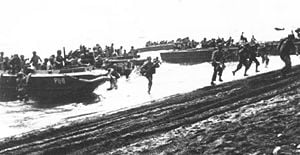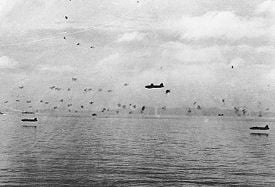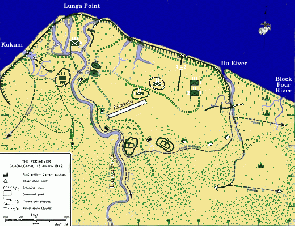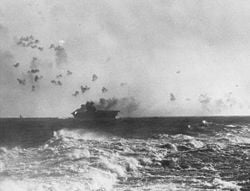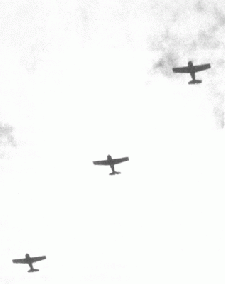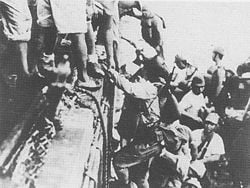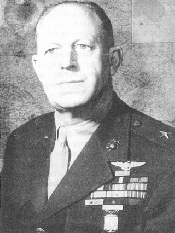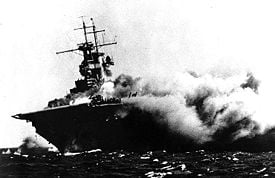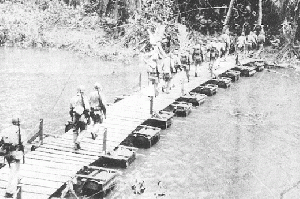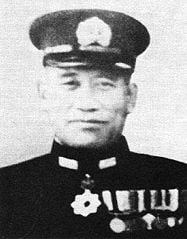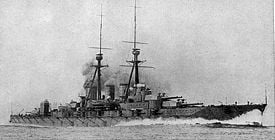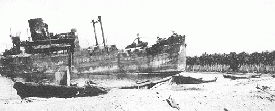| Guadalcanal campaign | |||||||
|---|---|---|---|---|---|---|---|
| Part of the Pacific Theater of World War II | |||||||
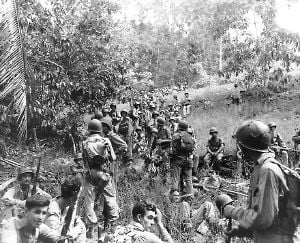 United States Marines rest in the field during the Guadalcanal campaign. | |||||||
| |||||||
| Combatants | |||||||
| Allied forces including: |
|||||||
| Commanders | |||||||
| Strength | |||||||
| 60,000 (ground forces) | 36,200 (ground forces) | ||||||
| Casualties | |||||||
| 1,768 dead (ground), 4,911 dead (naval), 420 dead (aircrew), 4 captured, 29 ships sunk, 615 aircraft destroyed |
24,600-25,600 dead (ground), 3,543 dead (naval), 1,200 dead (aircrew), 1,000 captured, 38 ships sunk, 683-880 aircraft destroyed | ||||||
The Guadalcanal campaign, also known as the Battle of Guadalcanal, was fought between August 7, 1942, and February 9, 1943, in the Pacific theater of World War II. This campaign, fought on the ground, at sea, and in the air, pitted Allied forces against Imperial Japanese forces, and was a decisive, strategically significant campaign of World War II. The fighting took place on and around the island of Guadalcanal in the southern Solomon Islands and was the first major offensive launched by Allied forces against the Empire of Japan.
The Guadalcanal campaign marked the first significant strategic combined arms victory by Allied forces over Japanese forces in the Pacific theater. For this reason, the Guadalcanal campaign is often referred to as a "turning point" in the war. The campaign marked the beginning of the transition by Allied forces from defensive operations to the strategic offensive while the forces of Japan were thereafter forced to cease strategic offensive operations and instead concentrate on strategic defense, culminating in the ultimate defeat of Japan and the end of World War II.
The high numbers of attrition in both men and material helped shift the Allied approach to an island hopping offensive promoted by generals such as Douglas MacArthur. In addition, the allied victory on Guadalcanal Island set in motion events that enabled the Allied war effort worldwide.
Background
On December 7, 1941, Japanese forces attacked the U.S. Pacific fleet at Pearl Harbor, Hawaii. The attack crippled much of the U.S. battleship fleet and precipitated a state of war between the two nations. The initial goals of Japanese leaders were to neutralize the U.S. fleet, seize possessions rich in natural resources, and establish strategic military bases to defend Japan's empire in the Pacific and Asia. In further support of these goals, Japanese forces also attacked and took control of the Philippines, Thailand, Malaya, Singapore, the Dutch East Indies, Wake Island, New Britain, and Guam.
Two later attempts by the Japanese to extend their defensive perimeter in the south and central Pacific were thwarted in the battles of Coral Sea (May 1942) and Midway (June 1942). These two strategic victories for the Allies provided them with an opportunity to take the initiative and launch an offensive against the Japanese in the Pacific.
Allied strategists knew the Japanese Navy had occupied Tulagi in May 1942 and had constructed a seaplane base near there. Allied concern grew when in early July 1942 the Japanese Navy began constructing a large airfield near Lunga Point on nearby Guadalcanal. By August 1942, the Japanese had about 900 troops on Tulagi and nearby islands, and 2,800 personnel (2,200 of whom were Korean construction specialists) on Guadalcanal. These bases, when fully completed, would protect Japan's major base at Rabaul, threaten Allied supply and communication lines, and establish a staging area for possible future offensives against Fiji, New Caledonia, and Samoa. The Japanese planned to deploy 45 fighter and 60 bomber aircraft to Guadalcanal once the airfield was complete.
The Allied plan to attack the Japanese positions in the southern Solomons was conceived by U.S. Admiral Ernest King, Commander in Chief, United States Fleet. He proposed the offensive to deny the use of the southern Solomon islands by the Japanese as bases to threaten the supply routes between the U.S. and Australia, and to use them as starting points for a campaign with the goal of isolating the major Japanese base at Rabaul while also supporting the Allied New Guinea campaign under Douglas MacArthur. The eventual goal was to open the way for the U.S. to retake the Philippines. U.S. Admiral Chester Nimitz, Allied commander in chief for Pacific forces, created the South Pacific theater, with Vice Admiral Robert L. Ghormley placed in command on June 19, 1942, to direct the Allied offensive in the Solomons.
In preparation for the future offensive in the Pacific in May 1942, U.S. Marine Major General Alexander Vandegrift was ordered to move his U.S. 1st Marine Division from the U.S. to New Zealand. Other Allied land, naval, and air force units were sent to establish bases in Fiji, Samoa, New Hebrides, and New Caledonia.Espiritu Santo in New Hebrides was selected as the headquarters and main base for the southern Solomons offensive, codenamed Operation Watchtower, with the commencement date set for August 7, 1942. At first, the Allied offensive was planned just for Tulagi and the Santa Cruz Islands, omitting Guadalcanal. However, after Allied reconnaissance discovered the Japanese airfield construction efforts on Guadalcanal, capture of that airfield was added to the plan, and the Santa Cruz operation was (eventually) dropped.
The Allied Watchtower expeditionary force of 75 warships and transports, which included vessels from both the U.S. and Australia, assembled near Fiji on July 26, 1942, and engaged in one rehearsal landing prior to leaving for Guadalcanal on July 31. The on-scene commander of the Allied expeditionary force was U.S. Vice Admiral Frank Jack Fletcher, whose flagship was the aircraft carrier USS Saratoga. The Allied commander of the amphibious transport force was U.S. Rear Admiral Richmond K. Turner. Vandegrift was the commander of the 16,000 Allied (primarily U.S. Marine) ground forces involved in the landings.
Landings
Bad weather allowed the Allied expeditionary force to arrive in the vicinity of Guadalcanal undetected by the Japanese on the morning of August 7. The landing force ships split into two groups, with one group assaulting Guadalcanal, and the other Tulagi, Florida, and nearby islands. Allied warships bombarded the invasion beaches while U.S. carrier aircraft bombed Japanese positions on the target islands and destroyed 15 Japanese seaplanes at their base near Tulagi.
Tulagi and two nearby small islands, Gavutu and Tamambogo, were assaulted by 3,000 U.S. Marines on August 7. The 886 Japanese Imperial Navy personnel manning the naval and seaplane bases on the three islands fiercely resisted the Marine attacks. With some difficulty, the U.S. Marines finally secured all three islands; Tulagi on August 8, and Gavutu and Tanambogo by August 9. The Japanese defenders were killed almost to the last man while the Marines suffered 122 killed.
In contrast to Tulagi, Gavutu, and Tanambogo, the landings on Guadalcanal encountered much less resistance. At 09:10 on August 7, General Vandegrift and 11,000 U.S. Marines came ashore on Guadalcanal between Koli Point and Lunga Point. Advancing towards Lunga Point, they encountered no resistance except for "tangled" rain forest, and they halted for the night about 1,000 meters from the Lunga Point airfield. The next day, again against little resistance, the Marines advanced all the way to the Lunga River and secured the airfield by 16:00 on August 8. The Japanese naval construction units had abandoned the airfield area, leaving behind food, supplies, and intact construction equipment and vehicles.
During the landing operations on August 7 and August 8, Japanese aircraft based at Rabaul, under the command of Sadayoshi Yamada, attacked the Allied amphibious forces several times, setting afire the U.S. transport George F. Elliot (which sank two days later) and heavily damaging the destroyer USS Jarvis. In the air attacks over the two days, the Japanese lost 36 aircraft, while the U.S. lost 19 aircraft, both in combat and to accident, including 14 carrier fighter aircraft.
After these clashes, Fletcher was concerned about the losses to his carrier fighter aircraft strength, anxious about the threat to his carriers from further Japanese air attacks, and worried about his ship's fuel levels. Fletcher determined that he would withdraw from the Solomon Islands area with his carrier task forces the evening of August 8 to avoid further losses. The loss of carrier air cover caused Turner to decide that he would have no choice but also to withdraw his ships from Guadalcanal, even though less than half of the supplies and heavy equipment on the transport ships needed by the troops ashore had been unloaded. Turner intended to unload as many supplies as possible on Guadalcanal and Tulagi throughout the night of August 8 and then depart with his ships early on August 9.
That night, as the transports unloaded, two groups of Allied warships screening the transports were surprised and defeated by a Japanese force of seven cruisers and one destroyer, commanded by Japanese Vice Admiral Gunichi Mikawa. One Australian and three U.S. cruisers were sunk, and one other U.S. cruiser and two destroyers were damaged in this lopsided Japanese victory. Mikawa, who was unaware that Fletcher had withdrawn with the U.S. carriers, immediately returned to his home ports of Rabaul and Kavieng without attempting to attack the now unprotected Allied transports. Mikawa was concerned about U.S. carrier air attacks during daylight hours if he tarried in the southern Solomons area. After this defeat, Turner withdrew all remaining Allied naval forces by the evening of August 9, leaving the Marines ashore without much of the heavy equipment, provisions, and troops still aboard the transports.
Initial operations
The 11,000 Marines remaining on Guadalcanal initially concentrated on forming a loose defensive perimeter around Lunga Point and the airfield, moving the landed supplies within the perimeter, and finishing the airfield. In four days of intense effort, the supplies were moved from the landing beach into dispersed dumps within the perimeter. Work began on the airfield immediately, mainly using captured Japanese equipment. On August 12, the airfield was named Henderson Field after Major Lofton Henderson, a Marine aviator who had been killed at the Battle of Midway. By August 18, the airfield was ready for operation. Five days worth of food had been landed from the transports which, along with captured Japanese provisions, gave the Marines a total of 14 days worth of food. To conserve the limited food supplies, the Allied troops were limited to two meals per day. Allied troops encountered a "severe strain" of dysentery soon after the landings, with one in five Marines afflicted by mid-August. Although some of the Korean construction workers surrendered to the Marines, most of the remaining Japanese and Korean personnel gathered just west of the Lunga perimeter on the west bank of the Matanikau River and subsisted mainly on coconuts. A Japanese naval outpost was also located at Taivu Point, about 35 kilometers (22Â mi) east of the Lunga perimeter. On August 8, a Japanese destroyer delivered 113 naval reinforcement troops to the Matanikau position.
On the evening of August 12, a 25-man U.S. Marine patrol, led by Lt. Col Frank Goettge and primarily consisting of intelligence personnel, landed by boat west of the Lunga perimeter, between Point Cruz and the Matanikau River, on a reconnaissance mission with a secondary objective of contacting a group of Japanese troops that the U.S. forces believed might be willing to surrender. Soon after the patrol landed, a nearby platoon of Japanese troops attacked and almost completely wiped out the group of Marines.
On August 19, Vandegrift sent three companies from the U.S. 5th Marine Regiment to attack the Japanese troop concentration west of the Matanikau. One Marine company attacked across the sandbar at the mouth of the Matanikau river while another company crossed the river 1,000 meters inland and attacked the Japanese forces located in Matanikau village. The third Marine company landed by boat further west and attacked Kokumbuna village. After briefly occupying the two villages, the three Marine companies returned to the Lunga perimeter, having killed about 65 Japanese soldiers while losing four. This action, sometimes referred to as the "First Battle of the Matanikau," was the first of several major actions that would take place in the Matanikau river area during the campaign.
On August 20, the escort carrier USS Long Island delivered two squadrons of Marine aircraft to Henderson Field. One squadron consisted of 19 Grumman F4F fighters and the other was a squadron of 12 SBD Dauntless dive bombers. The aircraft at Henderson became known as the "Cactus Air Force" after the Allied codename for Guadalcanal. The Marine fighters went into action the next day, attacking one of the Japanese bomber air raids that occurred almost daily. On August 22, five U.S. Army P-400 fighters (a variant of the P-39 Airacobra) and their pilots arrived at Henderson Field.
Battle of the Tenaru
In response to the Allied landings on Guadalcanal, the Japanese Imperial General Headquarters assigned the Imperial Japanese Army's 17th Army, a corps-sized command based at Rabaul and under the command of Lieutenant General Harukichi Hyakutake, with the task of retaking Guadalcanal from Allied forces. The 17th Army, currently heavily involved with the Japanese campaign in New Guinea, had only a few units available to send to the southern Solomons area. Of these units, the 35th Infantry Brigade under Major General Kiyotake Kawaguchi was at Palau, the 4th (Aoba) Infantry Regiment was in the Philippines and the 28th (Ichiki) Infantry Regiment, under the command of Colonel Kiyonao Ichiki, was on board transport ships near Guam. The different units began to move towards Guadalcanal immediately, but Ichiki's regiment, being the closest, arrived first. A "First Element" of Ichiki's unit, consisting of about 917 soldiers, landed from destroyers at Taivu Point, east of the Lunga perimeter, on August 19.
Underestimating the strength of Allied forces on Guadalcanal, Ichiki's unit conducted a nighttime frontal assault on Marine positions at Alligator Creek (often called the "Ilu River" on U.S. Marine maps) on the east side of the Lunga perimeter in the early morning hours of August 21. Ichiki's assault was defeated with heavy losses for the Japanese attackers in what became known as the Battle of the Tenaru. After daybreak, the Marine units counterattacked Ichiki's surviving troops, killing many more of them, including Ichiki. In total, all but 128 of the original 917 members of the Ichiki Regiment's First Element were killed in the battle. The survivors of Ichiki's force returned to Taivu Point, notified 17th Army headquarters of their defeat in the battle, and awaited further reinforcements and orders from Rabaul.
Battle of the Eastern Solomons
As the Tenaru battle was ending, more Japanese reinforcements were already on their way from Truk. Departing Truk on August 16 were three slow transports carrying the remaining 1,400 soldiers from Ichiki's (28th) Infantry Regiment plus 500 naval troops from the 5th Yokosuka Special Naval Landing Force. Guarding the transports were 13 warships commanded by Japanese Rear Admiral Raizo Tanaka who planned to land the troops on Guadalcanal on August 24. To cover the landings of these troops and provide support for the operation to retake Henderson Field from Allied forces, the Japanese Combined Fleet sortied from Truk on August 21 and headed towards the southern Solomon Islands with a force of three carriers and 30 other warships.
Simultaneously, three U.S. carrier task forces under Fletcher approached Guadalcanal to counter the Japanese offensive efforts. On August 24 and August 25, the two carrier forces fought the Battle of the Eastern Solomons that resulted in the fleets of both adversaries retreating from the area after taking some damage, with the Japanese losing one aircraft carrier. Tanaka's convoy, after suffering heavy damage during the battle from an air attack by U.S. aircraft from Henderson Field, including the sinking of one of the transports, was forced to divert to the Shortland Islands in the northern Solomons in order for the surviving troops to be transferred to destroyers for later delivery to Guadalcanal.
Air battles over Henderson Field and strengthening of the Lunga defenses
Throughout August, small numbers of U.S. aircraft and their crews continued to arrive at Guadalcanal. By the end of August, 64 aircraft of various types were stationed at Henderson Field. On September 3, the commander of 1st Marine Aircraft Wing, U.S. Marine Brigadier General Roy S. Geiger, arrived with his staff and took command of all air operations at Henderson Field. Air battles between the Allied aircraft at Henderson and Japanese bombers and fighters from Rabaul continued almost daily. Between August 26 and September 5, the U.S. lost about 15 aircraft while the Japanese lost approximately 19 aircraft. More than half of the downed U.S. aircrews were rescued while most of the Japanese aircrews were never recovered. The eight-hour round trip flight from Rabaul to Guadalcanal (about 1,800 kilometres or 1,120 miles total) seriously hampered Japanese efforts to establish air superiority over Henderson Field. Australian coastwatchers on Bougainville and New Georgia islands were often able to provide Allied forces on Guadalcanal with advance notice of inbound Japanese air strikes, allowing the U.S. fighters time to take off and position themselves to attack the Japanese bombers and fighters as they approached Henderson Field. Thus, the Japanese air forces were slowly losing a war of attrition in the skies above Guadalcanal.
During this time, Vandegrift continued to direct efforts to strengthen and improve the defenses of the Lunga perimeter. Between August 21 and September 3, he relocated three Marine battalions, including the 1st Raider Battalion, under U.S. Lieutenant Colonel Merritt A. Edson (Edson's Raiders), and the 1st Parachute Battalion from Tulagi and Gavutu to Guadalcanal. These units added about 1,500 troops to Vandegrift's original 11,000 men defending Henderson Field. The 1st Parachute battalion, which had suffered heavy casualties in the Battle of Tulagi and Gavutu-Tanambogo in August, was placed under Edson's command. The other relocated battalion, the 1st Battalion, 5th Marine Regiment, was landed by boat west of the Matanikau near Kokumbuna village on August 27 with the mission of attacking Japanese units in the area, much as in the first Matanikau action of August 19. In this case, however, the U.S. Marines were impeded by difficult terrain, hot sun, and well-placed Japanese defenses. The next morning the Marines found that the Japanese defenders had departed during the night, so the Marines returned to the Lunga perimeter by boat. Losses in this action were 20 Japanese and 3 Marines killed.
Small Allied naval convoys arrived at Guadalcanal on August 23, August 29, September 1, and September 8 to provide the Marines at Lunga with more food, ammunition, aircraft fuel, and aircraft technicians. The September 1 convoy also brought 392 U.S. Navy construction engineers to maintain and improve Henderson Field.
Tokyo Express
By August 23, Kawaguchi's 35th Infantry Brigade reached Truk and was loaded onto slow transport ships for the rest of the trip to Guadalcanal. The damage done to Tanaka's convoy during the Battle of the Eastern Solomons caused the Japanese to reconsider trying to deliver more troops to Guadalcanal by slow transport. Instead, the ships carrying Kawaguchi's soldiers were sent to Rabaul. From there, the Japanese planned to deliver Kawaguchi's men to Guadalcanal by destroyers staging through a Japanese naval base in the Shortland Islands. The Japanese destroyers were usually able to make round trips down "The Slot" to Guadalcanal and back in a single night throughout the campaign, minimizing their exposure to Allied air attack; they became known as the "Tokyo Express" by Allied forces and "Rat Transportation" by the Japanese. However, delivering the troops in this manner prevented most of the soldier's heavy equipment and supplies, such as heavy artillery, vehicles, and much food and ammunition, from being carried to Guadalcanal with them. In addition, they expended destroyers the Japanese Navy desperately needed for commerce defense. Either inability or unwillingness prevented Allied naval commanders from challenging Japanese naval forces at night, so the Japanese controlled the seas around the Solomon Islands during the nighttime. However, any Japanese ship remaining within range of the aircraft at Henderson Field during the daylight hours (about 200 miles, 370 km) was in great danger from damaging air attack. This "curious tactical situation" would exist for the next several months during the campaign.
Between August 29 and September 4, various Japanese light cruisers, destroyers, and patrol boats were able to land almost 5,000 troops at Taivu Point, including most of the 35th Infantry Brigade, much of the Aoba (4th) Regiment, and the rest of Ichiki's regiment. General Kawaguchi, who landed at Taivu Point on the August 31 Express run, was placed in command of all the Japanese troops on Guadalcanal. A barge convoy took another 1,000 soldiers of Kawaguchi's brigade, under the command of Colonel Akinosuka Oka, to Kamimbo, west of the Lunga perimeter.
Battle of Edson's Ridge
On September 7, Kawaguchi issued his attack plan to "rout and annihilate the enemy in the vicinity of the Guadalcanal Island airfield." Kawaguchi's attack plan called for his forces, split into three divisions, to approach the Lunga perimeter inland, culminating with a surprise night attack. Oka's forces would attack the perimeter from the west while Ichiki's Second Echelon, now renamed the Kuma Battalion, would attack from the east. The main attack would be by Kawaguchi's "Center Body," numbering 3,000 men in three battalions, from the south of the Lunga perimeter. By September 7, most of Kawaguchi's troops had departed Taivu to begin marching towards Lunga Point along the coastline. About 250 Japanese troops remained behind to guard the brigade's supply base at Taviu.
Meanwhile, native scouts under the direction of Martin Clemens, a coastwatcher and officer in the Solomon Islands Protectorate Defense Force, brought reports to the U.S. Marines of Japanese troops at Taivu, near the village of Tasimboko. Edson planned a raid to "wipe-out" the Japanese troop concentration at Taivu. On September 8, after being dropped-off near Taivu by boat, Edson's men captured Tasimboko as the Japanese defenders retreated into the jungle. In Tasimboko, Edson's troops discovered "vast stockpiles" of food, ammunition, medical supplies, and a powerful shortwave radio. After destroying everything in sight, except for some documents and equipment carried back with them, the Marines returned to the Lunga perimeter. The mounds of supplies, along with intelligence gathered from the captured documents, informed the Marines that at least 3,000 Japanese troops were on the island and apparently planning an attack on the U.S. defenses.
Edson, along with Colonel Gerald Thomas, Vandegrift's operations officer, believed that the Japanese attack would come at a narrow, grassy, 1,000-yard-long, coral ridge that paralleled the Lunga River and was located just south of Henderson Field. The unnamed ridge offered a natural avenue of approach to the airfield, commanded the surrounding area and, at that time, was almost undefended. On September 11, the 840 men of Edson's battalion deployed onto and around the ridge and prepared to defend it.
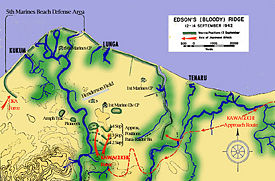
On the night of September 12, Kawaguchi's 1st Battalion attacked the Raider's between the Lunga River and ridge, forcing one Marine company to fall back to the ridge. The next night, Kawaguchi faced Edson's 830 Raiders with 3,000 troops of his brigade, plus an assortment of light artillery. The Japanese attack began just after nightfall, with Kawaguchi's 1st battalion assaulting Edson's right flank, just to the west of the ridge. After breaking through the Marine lines, the battalion's assault was eventually stopped by Marine units guarding the northern part of the ridge.
Two companies from Kawaguchi's 2nd battalion charged up the southern edge of the ridge and pushed Edson's troops back to Hill 123 on the center part of the ridge. Throughout the night, Marines at this position, supported by artillery, defeated wave after wave of frontal Japanese attacks. Japanese units that infiltrated past the ridge to the edge of the airfield were also repulsed. Attacks by the Kuma battalion and Oka's unit at other locations on the Lunga perimeter were also defeated by the Marine defenses. On September 14, Kawaguchi led the survivors of his shattered brigade on a five day march west to the Matanikau Valley to join with Oka's unit. In total, Kawaguchi's forces lost about 850 killed and the Marines 104.
On September 15, General Hyakutake at Rabaul learned of Kawaguchi's defeat and forwarded the news to the Imperial General Headquarters in Japan. In an emergency session, the top Japanese army and navy command staffs concluded that, "Guadalcanal might develop into the decisive battle of the war." The results of the battle now began to have a telling strategic impact on Japanese operations in other areas of the Pacific. Hyakutake realized that in order to send sufficient troops and material to defeat the Allied forces on Guadalcanal, he could no longer at the same time support the major Japanese offensive currently ongoing on the Kokoda Track in New Guinea. Hyakutake, with the concurrence of the General Headquarters, ordered his troops on New Guinea, who were within 30-miles of their objective of Port Moresby, to withdraw until the "Guadalcanal matter" was resolved. Hyakutake prepared to send more troops to Guadalcanal for another attempt to recapture Henderson Field.
Reinforcement
As the Japanese regrouped west of the Matanikau, the U.S. forces concentrated on shoring up and strengthening their Lunga defenses. On September 14, Vandegrift moved another battalion, the 3rd Battalion, 2nd Marine Regiment (3/2), from Tulagi to Guadalcanal. On September 18, an Allied naval convoy delivered 4,157 men from the 3rd Provisional Marine Brigade (the U.S. 7th Marine Regiment plus a battalion from the U.S. 11th Marine Regiment and some additional support units), 137 vehicles, tents, aviation fuel, ammunition, rations, and engineering equipment to Guadalcanal. These reinforcements allowed Vandegrift, beginning on September 19, to establish an unbroken line of defense completely around the Lunga perimeter. While covering this convoy, the U.S. aircraft carrier Wasp was sunk by the Japanese submarine I-19 southeast of Guadalcanal, temporarily leaving only one Allied aircraft carrier (Hornet) in operation in the South Pacific area. Vandegrift also made some changes in the senior leadership of his combat units, transferring several officers off the island that didn't meet his performance standards, and promoting junior officers who had "proved themselves" to take their places. One of these was the recently promoted Colonel Merritt Edson, who was placed in command of the 5th Marine Regiment.
A lull occurred in the air war over Guadalcanal, with no Japanese air raids occurring between September 14 and September 27 due to bad weather, during which both sides reinforced their respective air units. The Japanese delivered 85 fighters and bombers to their air units at Rabaul while the U.S. brought 23 fighters and attack aircraft to Henderson Field. On September 20, the Japanese counted 117 total aircraft at Rabaul while the Allies tallied 71 aircraft at Henderson Field. The air war resumed with a Japanese air raid on Guadalcanal on September 27, which was contested by U.S. Navy and Marine fighters from Henderson Field.
The Japanese immediately began to prepare for their next attempt to recapture Henderson Field. The 3rd Battalion, 4th (Aoba) Infantry Regiment had landed at Kamimbo Bay on the western end of Guadalcanal on September 11, too late to join Kawaguchi's attack on the U.S. Marines. By now, though, the battalion had joined Oka's forces near the Matanikau. Tokyo Express runs on September 14, 20, 21, and 24 by destroyers brought food and ammunition, as well as 280 men from the 1st Battalion, Aoba Regiment, to Kamimbo on Guadalcanal. The Japanese 2nd Infantry Division was transported to Rabaul and prepared for transport by Tokyo Express to Guadalcanal. Much of the Japanese 38th Division in the Dutch East Indies was notified to move to Rabaul in preparation for deployment to Guadalcanal. The Japanese planned to transport a total of 17,500 troops from the 2nd and 38th Divisions to the island to take part in the next major attack on the Lunga Perimeter, set for October 20, 1942.
Actions along the Matanikau
General Vandegrift and his staff were aware that Kawaguchi's troops had retreated to the area west of the Matanikau and that numerous groups of Japanese stragglers were scattered throughout the area between the Lunga Perimeter and the Matanikau River. Vandegrift, therefore, decided to conduct another series of small unit operations around the Matanikau Valley. The purpose of these operations was to "mop-up" the scattered groups of Japanese troops east of the Matanikau and to keep the main body of Japanese soldiers off-balance to prevent them from consolidating their positions so close to the main Marine defenses at Lunga Point.
The first U.S. Marine operation and attempt to attack Japanese forces west of the Matanikau, conducted between September 23 and September 27, 1942, by elements of three U.S. Marine battalions, was repulsed by Kawaguchi's troops under Akinosuka Oka's local command. During the action, three U.S. Marine companies were surrounded by Japanese forces near Point Cruz west of the Matanikau, took heavy losses, and barely escaped with assistance from a U.S. Navy destroyer and landing craft manned by U.S. Coast Guard personnel.
In the second action between October 6 and 9, a larger force of U.S. Marines successfully crossed the Matanikau River, attacked newly landed Japanese forces from the 2nd Infantry Division under the command of generals Masao Maruyama and Yumio Nasu, and almost completely destroyed the Japanese 4th Infantry Regiment. The second action forced the Japanese to retreat from their positions east of the Matanikau and hindered Japanese preparations for their planned major offensive on the U.S. Lunga defenses set for later in October, 1942.
Between October 9 and October 11 the U.S. 1st Battalion 2nd Marines raided two small Japanese outposts about 30 miles east of the Lunga perimeter at Gurabusu and Koilotumaria near Aola Bay. The raids killed 35 Japanese at a cost of 17 Marines and three U.S. Navy personnel killed.
Battle of Cape Esperance
Throughout the last week of September and the first week of October, Tokyo Express runs delivered troops from the Japanese 2nd Infantry Division to Guadalcanal. The Japanese Navy promised to support the Army's planned offensive by not only delivering the necessary troops, equipment, and supplies to the island, but by stepping-up air attacks on Henderson Field and sending warships to bombard the airfield.
In the meantime, Major General Millard F. Harmon, commander of United States Army forces in the the South Pacific, convinced Ghormley that U.S. Marine forces on Guadalcanal needed to be reinforced immediately if the Allies were to successfully defend the island from the next, expected Japanese offensive. Thus, on October 8, the 2,837 men of the 164th Infantry Regiment from the U.S. Army's Americal Division boarded ships at New Caledonia for the trip to Guadalcanal with a projected arrival date of October 13. To protect the transports carrying the 164th to Guadalcanal, Ghormley ordered Task Force 64, consisting of four cruisers and five destroyers under U.S. Rear Admiral Norman Scott, to intercept and combat any Japanese ships that approached Guadalcanal and threatened the arrival of the transport convoy.
Mikawa's Eighth Fleet staff scheduled a large and "singularly important" Tokyo Express supply run for the night of October 11. Two seaplane tenders and six destroyers were to deliver 728 soldiers plus artillery and ammunition to Guadalcanal. At the same time but in a separate operation three heavy cruisers and two destroyers under the command of Rear Admiral Aritomo GotÅ were to bombard Henderson Field with special explosive shells with the object of destroying the CAF and the airfield's facilities. Due to the fact that U.S. Navy warships had yet to attempt to interdict any Tokyo Express missions to Guadalcanal, the Japanese weren't expecting any opposition from naval surface forces that night.
Just before midnight that night, Scott's warships detected GotÅ's force on radar near the entrance to the strait between Savo Island and Guadalcanal. By happenstance, Scott's force was in a position to cross the T of GotÅ's unsuspecting formation. Opening fire, Scott's warships sank one of GotÅ's cruisers and one of his destroyers, heavily damaged another cruiser, mortally wounded GotÅ, and forced the rest of GotÅ's warships to abandon the bombardment mission and retreat. During the exchange of gunfire, one of Scott's destroyers was sunk and one cruiser and another destroyer were heavily damaged. In the meantime, the Japanese supply convoy successfully completed unloading at Guadalcanal and began its return journey without being discovered by Scott's force. Later on the morning of October 12, four Japanese destroyers from the supply convoy turned-back to assist GotÅ's retreating, damaged warships. Air attacks by CAF aircraft from Henderson Field sank two of these destroyers later that day. The convoy of U.S. Army troops reached Guadalcanal as scheduled the next day.
Battleship bombardment of Henderson Field
In spite of the U.S. victory off Cape Esperance, the Japanese continued with plans and preparations for their large offensive scheduled for later in October. The Japanese decided to risk a one-time departure from their usual practice of only using fast warships to deliver their men and material to the island. On October 13, a convoy comprising six fast cargo ships with eight screening destroyers departed the Shortland Islands for Guadalcanal. The convoy carried 4,500 troops from the 16th and 230th Infantry Regiments, some naval marines, and two batteries of heavy artillery and one company of tanks.
To protect the approaching convoy from attack by CAF aircraft, at 01:33 on October 14 the Japanese battleships KongÅ and Haruna, escorted by one light cruiser and nine destroyers, approached Guadalcanal and opened fire on Henderson Field. Over the next one hour and 23 minutes, the two battleships fired 973 14-inch shells into the Lunga perimeter, most of them falling in and around the 2,200-meter-square area of the airfield. The bombardment heavily damaged both runways, burned almost all of the available aviation fuel, destroyed 48 of the CAF's 90 aircraft, and killed 41 men, including six CAF pilots.
In spite of the heavy damage, Henderson personnel were able to restore one of the runways to operational condition within a few hours. Seventeen SBDs and 20 Wildcats at Espiritu Santo were immediately flown to Henderson and U.S. Army and Marine transport aircraft began to shuttle aviation gasoline from Espiritu Santo to Guadalcanal. Now aware of the approach of the large Japanese reinforcement convoy, the U.S. desperately sought some way to interdict the convoy before it could reach Guadalcanal. Using fuel drained from destroyed aircraft, the CAF attacked the convoy twice on the 14th, but caused no damage.
The Japanese convoy reached Tassafaronga on Guadalcanal at midnight on October 14 and began unloading. Throughout the day of October 15, a string of CAF aircraft from Henderson bombed and strafed the unloading convoy, destroying three of the cargo ships. The convoy departed that night, having unloaded 4,500 troops and about two-thirds of the supplies and equipment. Several Japanese heavy cruisers also bombarded Henderson on the nights of October 14 and 15, destroying additional CAF aircraft, but failing to cause significant further damage to the airfield.
Battle for Henderson Field
Finally on October 23, with the addition of more troops, the Japanese made another attempt to capture Henderson Field from the south of the salient. The newly arrived U.S. Army's 164th Infantry Regiment and 1st Battalion, 7th Marines defended this position, and after a determined battle the attack was finally repulsed after committing the U.S. reserves.
On October 25, Platoon Sergeant Mitchell Paige and 33 marine riflemen, of (2/7/1) placed four water-cooled .30-caliber Browning machine guns on a ridge to defend Henderson Field. By the time the night was over the Japanese 29th Infantry Regiment had lost 553 killed or missing and 479 wounded among its 2,554 men. The Japanese 16th Regiment's losses were not accounted for but the 164th's burial parties handled 975 Japanese bodies. Total American estimates for Japanese casualties on that ridge were 2,200. All the men in Paige's platoon were either killed or wounded during the night of fierce fighting. Paige moved up and down the line placing dead and wounded troops back into foxholes and firing short bursts from each of the four Brownings to deceive the Japanese that a force still held the ridge. Paige was subsequently cited for a Medal of Honor for his actions that night.
At dawn of the next day, battalion executive officer Major Odell M. Conoley reinforced Paige on the hill. It was decided that they would charge the remnants of the two Japanese regiments who were now regrouping. Conoley gathered his resources who consisted of "three enlisted communication personnel, several riflemen, a few company runners who were at the point, together with a cook and a few mess men who had brought food to the position the evening before."
Battle of the Santa Cruz Islands
In support of this Japanese Army offensive of October 20-25, and with the hope of engaging Allied naval forces, Japanese carriers and other large warships moved into a position near the southern Solomon Islands. From this location, the Japanese naval forces hoped to engage and decisively defeat any Allied naval forces, especially the carrier force, that responded to the ground offensive. However, Allied naval forces also hoped to meet the Japanese naval forces in battle, with the same objectives of breaking the stalemate and decisively defeating their adversary.
The Japanese ground offensive was defeated by Allied ground forces in the Battle for Henderson Field. Nevertheless, the naval warships and aircraft from the two adversaries confronted each other on the morning of October 26, 1942, just north of the Santa Cruz Islands. After an exchange of carrier air attacks, Allied surface ships were forced to retreat from the battle area with the loss of the carrier USS Hornet sunk and another, the USS Enterprise heavily damaged. However, the participating Japanese carrier forces also retreated due to high aircraft and aircrew losses, and significant damage to two carriers. Although an apparent tactical victory for the Japanese in terms of ships sunk and damaged, the loss of many irreplaceable, veteran aircrews by the Japanese provided a long-term strategic advantage for the Allies, whose aircrew losses in the battle were relatively low, partially due to search and rescue efforts.
In November the Japanese sent reinforcements in the form of the 38th Infantry Division. During the Naval Battle of Guadalcanal, however, the transports carrying this reinforcement were badly damaged and the division was reduced to the strength of a regiment. Through November, American forces continued their offensive in an attempt to push the perimeter out beyond artillery range of the airfield. The Mantanikau River area was finally cleared after overcoming strong Japanese resistance.
Final Allied offensives and Operation Ke
By December the weary 1st Marine Division was withdrawn for recuperation, and over the course of the next month the U.S. XIV Corps took over operations on the island. This corps consisted of the 2nd Marine Division, the U.S. Army's 25th Infantry Division, and the Americal Division.
Japanese strength on the island waned due to attrition and shortages of supplies brought on by the build-up of Allied ships and aircraft. The U.S. XIV Corps began offensive operations on January 10, 1943, and by February 8 they had forced the remaining Japanese to be evacuated from Cape Esperance. American authorities declared Guadalcanal secure on February 9, 1943, after more than six months of combat: General Alexander Patch signaled his superiors: "Tokyo Express no longer has terminus on Guadalcanal."
The lack of supply on both sides meant that combat was especially intense and characterized by extreme desperation. The Japanese used fear as a tactic by placing the severed heads of dead Americans on pikes and planting them around the Marine perimeter. Additionally, neither side took many prisoners. Disease also played a significant role in the ground campaign, as both the Japanese and American forces were weakened by malaria in the insect-infested jungles. Both sides had difficulty maintaining their supplies to the island, the Japanese particularly, to the extent that island became also known as 'Starvation Island' to them.
Aftermath and historical significance
The Battle of Midway is widely considered to be the turning point in the Pacific theater, as it was a strategic naval victory which stopped Japan's eastern expansion toward Hawaii and the U.S. west coast. However, the Empire of Japan continued to expand in the southern Pacific, until receiving two decisive defeats at the hands of the Allies. Australian land forces had defeated Japanese Marines in New Guinea at the Battle of Milne Bay in September 1942, which was the first land defeat suffered by the Japanese in the Pacific. And, by the end of 1942, it was clear that Japan also had lost the Guadalcanal campaign, a more serious blow to Japan's strategic plans and an unanticipated defeat at the hands of the Americans.
The Guadalcanal campaign was costly to Japan both strategically and in material losses. Japan lost control of the Solomons Islands and the ability to interdict Allied shipping to Australia. Japan's major base at Rabaul was now directly threatened by allied air power. Most importantly, scarce Japanese land, air, and naval forces had disappeared forever into the Guadalcanal jungle and surrounding sea. The Japanese aircraft and ships destroyed and sunk in this campaign were irreplaceable, as were their highly-trained and veteran crews. It thus can be argued that this Allied victory was the first step in a long string of successes that eventually led to the surrender of Japan and the occupation of the Japanese home islands.
The Battle of Guadalcanal was one of the first prolonged campaigns in the Pacific. The campaign was a battle of attrition that strained the logistical capabilities of both sides. For the U.S. this need prompted the development of effective combat air transport for the first time. Japan was forced to rely on reinforcement by barges, destroyers, and submarines, with very uneven results. Early in the campaign the Americans were hindered by a lack of resources due to the "Germany First" policy of the United States. However, as the campaign continued, and the American public became more and more aware of the plight and perceived heroism of the American forces on Guadalcanal, more forces were dispatched to the area. This spelled trouble for Japan as its military-industrial complex was unable to match the output of American industry and manpower. Thus, as the campaign wore on the Japanese were losing irreplaceable units while the Americans were rapidly replacing and even augmenting their forces.
After Guadalcanal the Japanese were clearly on the defensive in the Pacific. The constant pressure to reinforce Guadalcanal had weakened Japanese efforts in other theatres, contributing to a successful Australian counteroffensive in New Guinea which culminated in the capture of the key bases of Buna and Gona in early 1943. In June, the Allies launched Operation Cartwheel, which initiated a strategy of isolating the major Japanese forward base, at Rabaul, and concentrated on cutting its sea lines of communication. This prepared the way for the island hopping campaigns of General Douglas MacArthur in the South West Pacific and Admiral Chester Nimitz in the Central Pacific towards Japan.
According to U.S. historian Gerhard L. Weinberg, Guadalcanal's broader effect on the war has often been overlooked. Japan's leaders planned a major offensive in the Indian Ocean and so notified their German ally, but the ships and planes required for the undertaking were instead drained into the Guadalcanal quagmire. Indeed, losses there undermined Japan's "barrier" defense. At the time Guadalcanal began, British Commonwealth forces were struggling to hold the German Afrika Korps away from the Suez Canal. Resupply and reinforcements which contributed to the victory at El Alamein were sent because the Indian Ocean was open to Allied shipping. In addition, vital Lend-Lease supplies from the U.S were able to travel through the Indian Ocean and across Iran just as the Soviet Union was struggling to defeat Germany's Fall Blau. British power in India itself was at its weakest in 1942; Japan's one and only chance of toppling the Raj, and severing the last supply routes to Nationalist China, slipped away in the Southwest Pacific.
ReferencesISBN links support NWE through referral fees
- Alexander, Joseph H. 2000. Edson's Raiders: The 1st Marine Raider Battalion in World War II. Naval Institute Press. ISBN 1-55750-020-7.
- Bergerud, Eric M. 1997. Touched with Fire: The Land War in the South Pacific. Penguin. ISBN 0-14-024696-7.
- Dull, Paul S. 1978. A Battle History of the Imperial Japanese Navy, 1941-1945. Naval Institute Press. ISBN 0-87021-097-1.
- Frank, Richard. 1990. Guadalcanal: The Definitive Account of the Landmark Battle. New York: Random House. ISBN 0-394-58875-4.
- Griffith, Samuel B. 1963. The Battle for Guadalcanal. Champaign, IL: University of Illinois Press. ISBN 0-252-06891-2.
- Hammel, Eric. 1999. Carrier Clash: The Invasion of Guadalcanal & The Battle of the Eastern Solomons August 1942. St. Paul, MN, USA: Zenith Press. ISBN 0760320527.
- Hammel, Eric. 1999. Carrier Strike: The Battle of the Santa Cruz Islands, October 1942. Pacifica Press. ISBN 0-935553-37-1.
- Loxton, Bruce, and Chris Coulthard-Clark. 1997. The Shame of Savo: Anatomy of a Naval Disaster. Australia: Allen & Unwin Pty Ltd. ISBN 1-86448-286-9.
- Lundstrom, John B. 2005. First Team And the Guadalcanal Campaign: Naval Fighter Combat from August to November 1942. Naval Institute Press. ISBN 1-59114-472-8.
- McGee, William L. 2002. The Solomons Campaigns, 1942-1943: From Guadalcanal to BougainvilleâPacific War Turning Point, Volume 2. BMC Publications. ISBN 0-9701678-7-3.
- Miller, Thomas G. 1969. Cactus Air Force. Admiral Nimitz Foundation. ISBN 0-934841-17-9.
- Morison, Samuel Eliot. 1958. The Struggle for Guadalcanal, August 1942âFebruary 1943. Boston: Little, Brown and Company. ISBN 0-316-58305-7.
- Murray, Williamson, and Allan R. Millett. 2001. A War To Be Won: Fighting the Second World War. United States of America: Belknap Press. ISBN 0-674-00680-1.
- Rottman, Gordon L., and Dr. Duncan Anderson. 2005. Japanese Army in World War II: The South Pacific and New Guinea, 1942-43. Oxford and New York: Osprey. ISBN 1-84176-870-7.
- Smith, Michael T. 2000. Bloody Ridge: The Battle That Saved Guadalcanal. New York: Pocket. ISBN 0-7434-6321-8.
- Tregaskis, Richard. 1943. Guadalcanal Diary. Random House. ISBN 0-679-64023-1.
- Twining, Merrill B. 1996. No Bended Knee: The Battle for Guadalcanal. Novato, CA: Presidio Press. ISBN 0-89141-826-1.
External links
All links retrieved September 22, 2023.
- Guadalcanal
- Guadalcanal Campaign
- The Army Air Forces in World War II
- Guadalcanal Battle Sites, 1942-2013
- The Official History of New Zealand in the Second World War, 1939â1945
- Pearl Harbor to Guadalcanal
- Time of the Aces: Marine Pilots in the Solomons, 1942-1944
Credits
New World Encyclopedia writers and editors rewrote and completed the Wikipedia article in accordance with New World Encyclopedia standards. This article abides by terms of the Creative Commons CC-by-sa 3.0 License (CC-by-sa), which may be used and disseminated with proper attribution. Credit is due under the terms of this license that can reference both the New World Encyclopedia contributors and the selfless volunteer contributors of the Wikimedia Foundation. To cite this article click here for a list of acceptable citing formats.The history of earlier contributions by wikipedians is accessible to researchers here:
The history of this article since it was imported to New World Encyclopedia:
Note: Some restrictions may apply to use of individual images which are separately licensed.
